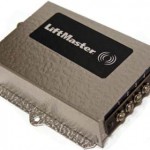Third and final PHP script for Android GCM. This script is for device registration. After a device has registered itself for GCM, the registration id is sent to the third-party application server for storage.
Also see http://skipstechtalk.net/2012/07/20/my-google-cloud-messaging-gcm-php-script/
and
http://skipstechtalk.net/2012/07/31/my-php-script-for-storing-gcm-user-registration/
<?php /* saveRegId.php Script for receiving GCM device registrations. The script expects an HTTP GET with the following parameters: &phone_name=my_friendly_phone_name. This is edited by the user in the global settings. ®id=my_gcm_registration_id. This is the registration id that the phone receives when it calls the GCM registration intent &device_id=my_device_id. Normally this is the IMEI number, but it can be other numbers, depending on the phone and OS. It is easily hacked, so it isn't bulletproof. I just use it to try and prevent multiple device registrations. &username=my_username. The same username used to register here &password=my_password. The same password used to register here $message_type=gcm or c2dm. All recent versions of PHCA send gcm A working example of this is (all on one line) https://phc-a.net/saveRegId.php?phone_name=Skips%20phone ®id=a1b2c3d4f51234567890abcdef &device_id=9ab8c7d6e5f1234567890abcdef &username=me &password=fluffypants &message_type=gcm */ $dbuser = 'mydbusername'; $dbname = 'phcadb'; $dbpasswd = 'mydbpassword'; $dbhost = 'my.dbhost.net'; $dbh = @mysql_connect($dbhost, $dbuser, $dbpasswd); $verbose = ""; if (!$dbh) { echo "Could not connect to MySQL server on " . $dbhost; die(); } else { $verbose = mysql_real_escape_string($_REQUEST[verbose]); } if (!@mysql_select_db($dbname, $dbh)) { if ($verbose==true) echo "Could not connect to database " . $dbname; die(); } // store the url, just for debugging purposes. //$incomingurl = curPageURL(); //$sql = "INSERT INTO incomingsql (sqlx) VALUES ('$incomingurl')"; //$result = query($sql); $salt = GetSalt(); $storedEncryptedPassword = GetStoredEncryptedPassword(); $encryptedPassword=hash('sha512', $salt.$_REQUEST[password]); for($i=0; $i<5000; $i++){ $encryptedPassword=hash('sha512', $salt.$encryptedPassword); } if ($storedEncryptedPassword == $encryptedPassword) { StoreRegistrationId($verbose); } else { header('HTTP/1.0 401 Unauthorized', true, 401); die("Bad Username/Password"); } function StoreRegistrationId($verbose) { $phone_name = mysql_real_escape_string($_REQUEST[phone_name]); $regid = mysql_real_escape_string($_REQUEST[regid]); $device_id = mysql_real_escape_string($_REQUEST[device_id]); $username = mysql_real_escape_string($_REQUEST[username]); $password= mysql_real_escape_string($_REQUEST[password]); $message_type = mysql_real_escape_string($_REQUEST[message_type]); // first check to see if we already have this device registered if ($verbose==true) echo "Checking if we have seen this device before<br />"; $sql = "SELECT * FROM userdevices WHERE device_id='$_REQUEST[device_id]'"; if ($verbose==true) echo "$sql <br />"; $result = query($sql); if (mysql_num_rows($result) == 0) // it's a new device, so INSERT it { $sql = "INSERT INTO userdevices ( registration_id, device_id, username, is_sending, message_type, phone_name ) VALUES ( '$regid', '$device_id', '$username', 1, '$message_type', '$phone_name' )"; } else { // we do have this phone registered already. Check to see if it is with the same user. // We don't want people signing up with multiple accounts. $row = mysql_fetch_array($result); if ($_REQUEST[username] == $row[username]) { $sql = "UPDATE userdevices SET registration_id='$regid', is_sending=1, message_type='$message_type', phone_name='$phone_name' WHERE username = '$username' AND device_id='$device_id'"; } else { header('HTTP/1.0 550 Unauthorized', true, 550); die("This phone is already registered with username '" . $row[username] . "'"); } } if ($verbose==true) echo "$sql <br />"; $result = query($sql); if (!$result) { header('HTTP/1.0 500 Internal Server Error'); die("Internal Error"); } else { //header("Status: 200"); //echo "OK<br />"; // send a test message to the phone to be sure everything is working. $url = "https://phc-a.net/send.php?username=".$username."&password=".$password."&varname=".$device_id."&varvalue=".$device_id; if ($verbose==true) echo "Sending test message to GCM server. The url is $url<br />"; $ch = curl_init($url); curl_setopt($ch, CURLOPT_URL, $url); curl_setopt($ch, CURLOPT_RETURNTRANSFER, 1); curl_setopt($ch, CURLOPT_TIMEOUT, '10'); $data = curl_exec($ch); if(curl_errno($ch) && $verbose==true){ echo 'Curl error: ' . curl_error($ch); } if ($verose==true) print_r(curl_getinfo($ch)); if ($verbose==true) echo "Execute complete. Here's the data: $data"; curl_close($ch); //exit; } } function curPageURL() { $pageURL = 'http'; if ($_SERVER["HTTPS"] == "on") {$pageURL .= "s";} $pageURL .= "://"; if ($_SERVER["SERVER_PORT"] != "80") { $pageURL .= $_SERVER["SERVER_NAME"].":".$_SERVER["SERVER_PORT"].$_SERVER["REQUEST_URI"]; } else { $pageURL .= $_SERVER["SERVER_NAME"].$_SERVER["REQUEST_URI"]; } return $pageURL; } function GetSalt() { $sql = "SELECT * FROM user WHERE username = '$_REQUEST[username]'"; $result = query($sql); if (mysql_num_rows($result) == 0) // bad username { header('HTTP/1.0 401 Unauthorized'); die("Bad Username/Password"); } while ($row = mysql_fetch_assoc($result)) { return $row["salt"]; } } function GetStoredEncryptedPassword() { $sql = "SELECT * FROM user WHERE username = '$_REQUEST[username]'"; $result = query($sql); if (mysql_num_rows($result) == 0) // bad username, should not happen here { header('HTTP/1.0 401 Unauthorized'); die("Bad Username/Password"); } while ($row = mysql_fetch_assoc($result)) { return $row["passwordHash"]; } } function query($query) { if(!($result = mysql_query($query))) { die ( "MySQL Reports: " . mysql_error()); } return $result; } ?> |
